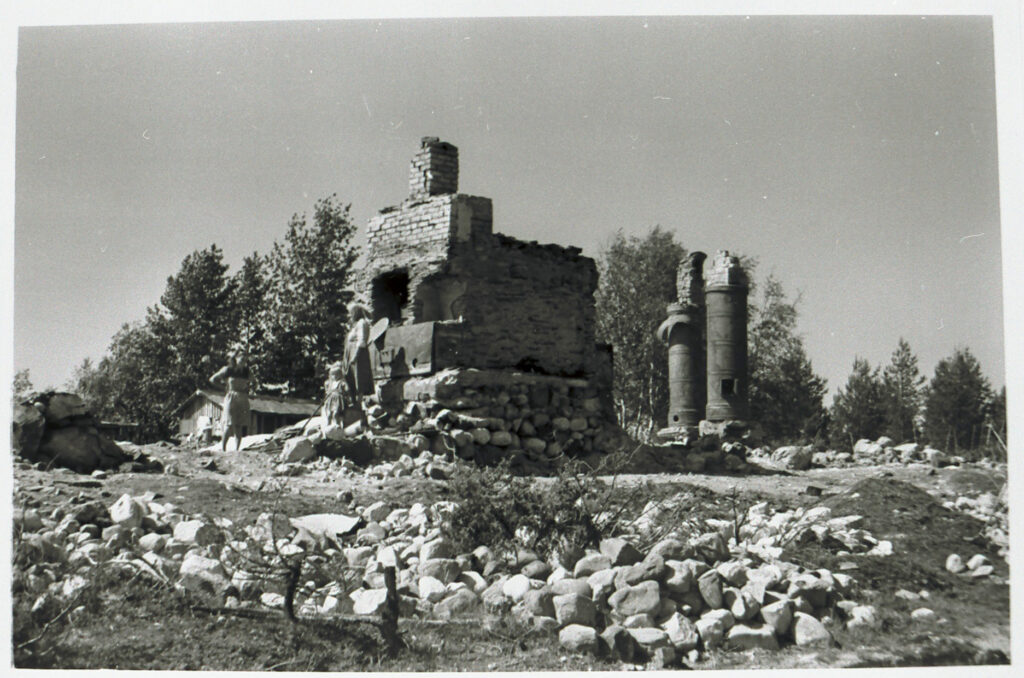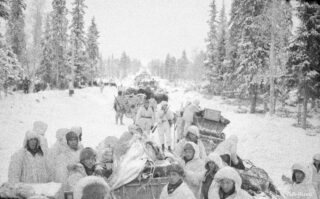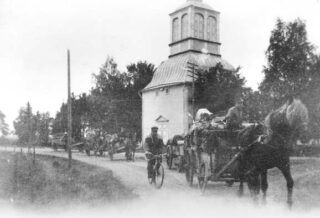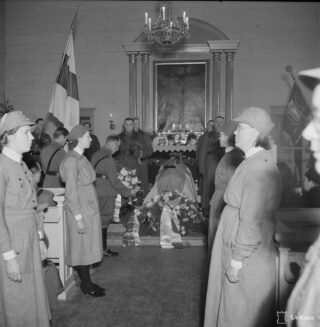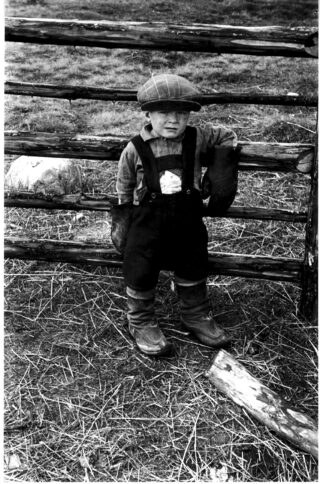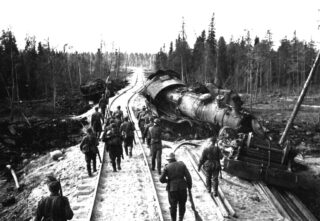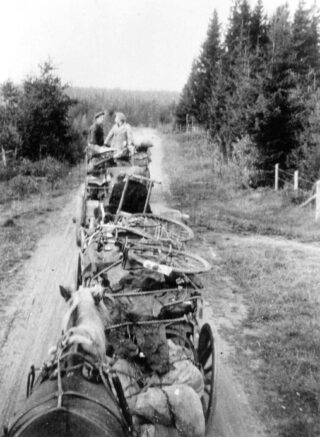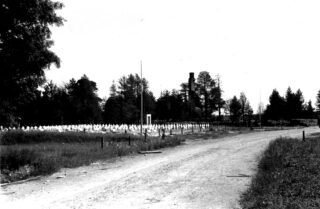As soon as the war began, the Soviets attacked the border stations of Kuusamo, which started the rapid evacuation of the inhabitants of the border villages. In some places there was such a rush to leave that loaves of bread were left baking in the ovens as the residents fled half-naked to the woods.
When the evacuations were complete, all the buildings in the border villages were burned down by retreating Finnish soldiers, in order to prevent the Soviets from using them as accommodation for their soldiers.
Lempi Nevala from Kiviranta, Heikkilä, recalled the first night of the evacuation journey:
“We had a new shed for ten cows. Dear me, then they were all burned down. On that same night we knew that there was our home in flames. During the same night, all the homes in that village were burned.”
Apart from the border areas, Kuusamo could be evacuated in fairly peaceful conditions. By mid-December, all the 8,900 people to be evacuated had been transferred to municipalities along the rivers Iijoki and Kiiminkijoki. Old farmers, young women, and boys drove the cattle along forest paths through the southern parts of Posio and following the direction of Ouluntie road to the evacuation destinations.
The people of village communities were evacuated to the same locations. “Just like a map of home it was, as we were together with the neighbours,” Toivo Murtovaara recalled. The placement of large families in particular was difficult. The living conditions were cramped and also dreary. There were not enough beds for everyone in the small bedrooms and farmhouse livingrooms, and many people had to sleep on the cold floors. Food was plentiful, as the summer of 1939 had been warm and productive in Finland, the evacuee families got meat and milk from their own cattle, and other necessities were traded from shops with cards provided by the authorities. The evacuees tended cattle, cut firewood, knitted wool socks for soldiers, and did other everyday chores. In the evenings, young people gathered to farmhouse livingrooms where they could listen to war reports on the radio.
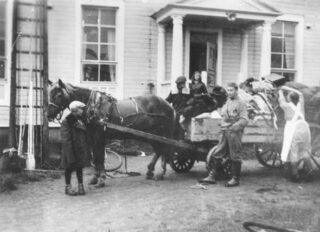
Evacuees about to leave from Kuusamo in September 1944. Pictured in the yard of Pohjolan Osakepankki bank: Pentti, Martti, Liisa, Aarne and Kersti Alavuotunki.
PHOTO Wesa Rinne Photo Archive
